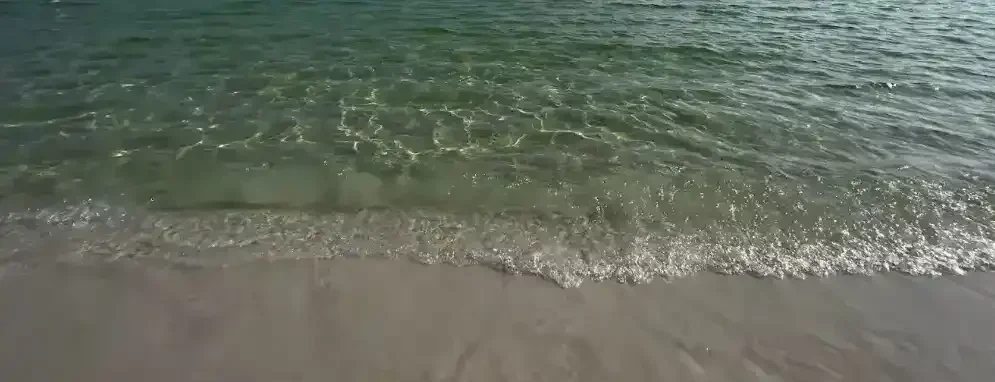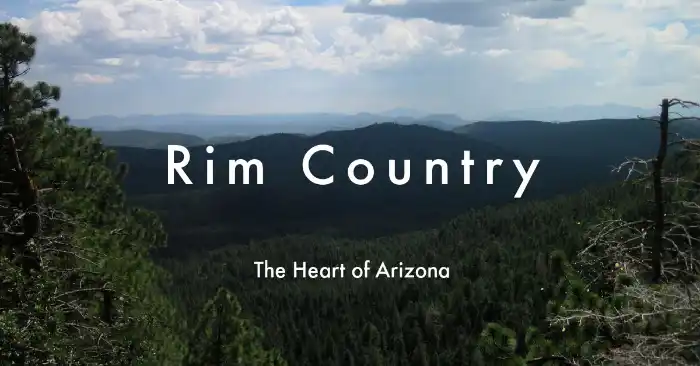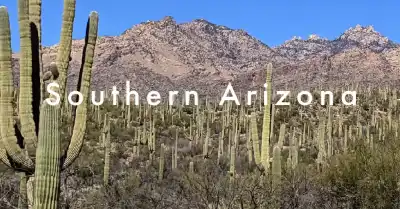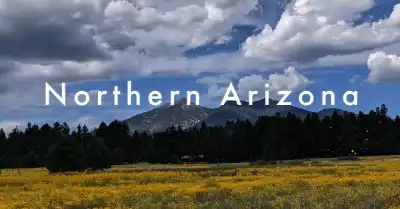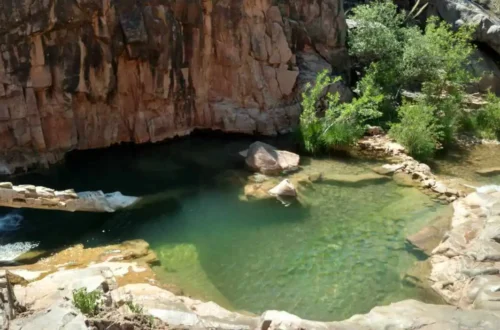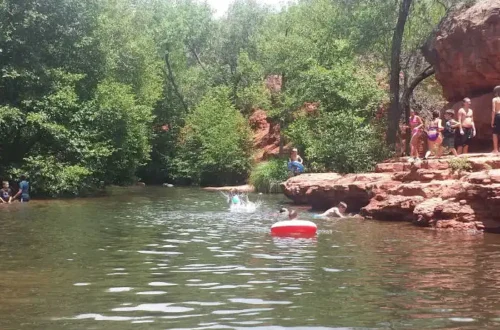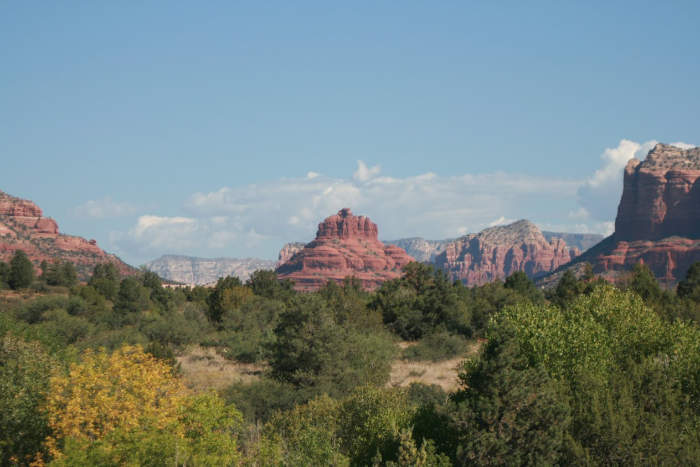When to Visit Sedona & the Verde Valley – Weather by Month
Thinking of visiting the Verde Valley in Arizona? Find out the best time of year to visit. To help you plan your trip we have included some average temperatures by month, so you know when to visit the Verde Valley.
When to Visit Sedona and North Central Arizona – Verde Valley
Verde Valley is also referred to as the high desert. This area includes Sedona, Prescott, Cottonwood, Clarkdale and Camp Verde. The area experiences a mild winter and hot summers. Spring and Fall are the ideal times to visit the area for outdoor activities such as hiking and gorgeous wildflowers. When to visit will depend on what you would like to do during your visit.
Sedona and North Central Arizona Weather by Month
January
- Average High: 57°F (14°C)
- Average Low: 31°F (-0.5°C)
- Precipitation: 1.9 inches
Overview: January in Sedona is one of the coldest months, but it’s still relatively mild compared to other parts of the country. Frost is common at night, but daytime temperatures often reach the mid-50s to low 60s. Snow is rare but possible, especially in higher elevations.
Weather: Cooler temperatures, ranging from 56°F to 61°F (13°C to 16°C) during the day, with cold nights.
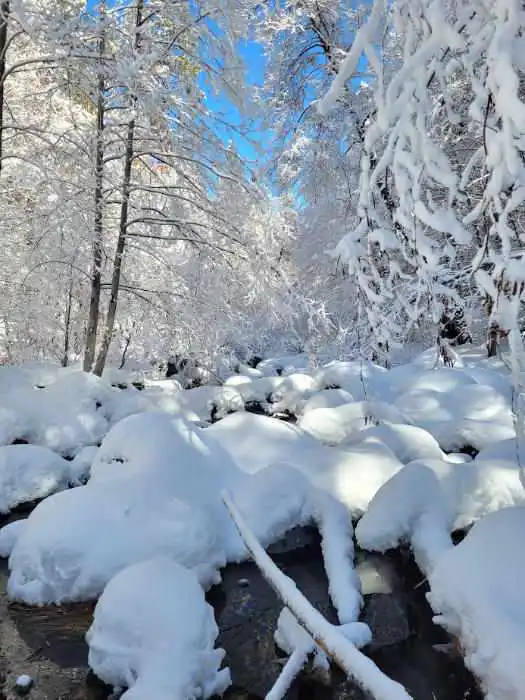
Highlights: Lower prices, fewer tourists, possible light snow, holiday events.
Why Visit: If you’re looking for a quieter, more budget-friendly time to visit north central Arizona, winter is a great choice.
The tourist crowds are at their lowest, and you can often find deals on accommodations. While the days are cooler, they’re still pleasant enough for outdoor activities like hiking.
Winter also brings the chance of light snow. The dusting of snow on Sedona’s red rock formations is magical.
February
- Average High: 61°F (16°C)
- Average Low: 34°F (1°C)
- Precipitation: 1.9 inches
Overview: February starts to warm up slightly, though it’s still quite cool, especially in the mornings and evenings. It’s a good month for hiking, as the cooler temperatures make for comfortable conditions.
Weather: Cooler temperatures, ranging from 56°F to 61°F (13°C to 16°C) during the day, with cold nights.
Highlights: Lower prices, fewer tourists, possible light snow, holiday events.
Why Visit: If you’re looking for a quieter, more budget-friendly time to visit Sedona, winter is a great choice. The tourist crowds are at their lowest, and you can often find deals on accommodations. While the days are cooler, they’re still pleasant enough for outdoor activities like hiking. Winter also brings the chance of light snow, which can create a magical atmosphere as it dusts the red rock formations. Plus, the holiday season adds a festive touch to the town with lights and events.
March
- Average High: 66°F (19°C)
- Average Low: 38°F (3°C)
- Precipitation: 2.0 inches
Overview: March sees the beginning of spring, with warmer days and chilly nights. The occasional rain showers help bring the desert landscape to life, making it a beautiful time for outdoor activities.
Highlights: Wildflowers in bloom, mild temperatures, perfect for hiking, biking, and exploring.
Why Visit: Spring is arguably the best time to visit Sedona if you love outdoor adventures. The weather is ideal for hiking the many trails, with temperatures warm enough to be comfortable but not too hot. The wildflowers are in full bloom, adding splashes of color to the already stunning scenery. Popular spots like Cathedral Rock and Devil’s Bridge are accessible, and the pleasant weather makes for a perfect day outdoors.
April
- Average High: 73°F (23°C)
- Average Low: 43°F (6°C)
- Precipitation: 1.2 inches
Overview: April is a pleasant month with mild temperatures, making it perfect for outdoor adventures. Wildflowers start to bloom, adding vibrant colors to the landscape.
Highlights: Wildflowers in bloom, mild temperatures, perfect for hiking, biking, and exploring.
Why Visit: Spring is arguably the best time to visit Sedona if you love outdoor adventures. The weather is ideal for hiking the many trails, with temperatures warm enough to be comfortable but not too hot. The wildflowers are in full bloom, adding splashes of color to the already stunning scenery. Popular spots like Cathedral Rock and Devil’s Bridge are accessible, and the pleasant weather makes for a perfect day outdoors.
May
- Average High: 82°F (28°C)
- Average Low: 50°F (10°C)
- Precipitation: 0.6 inches
Overview: May is when things start to warm up significantly. The days are sunny and warm, but the evenings remain cool. It’s a great time for gardening and exploring the outdoors before the summer heat sets in.
Highlights: Wildflowers in bloom, mild temperatures, perfect for hiking, biking, and exploring.
Why Visit: Spring is arguably the best time to visit the Verde Valley if you love outdoor adventures. The weather is ideal for hiking the many trails, with temperatures warm enough to be comfortable but not too hot. The wildflowers are in full bloom, adding splashes of color to the already stunning scenery. Popular spots like Cathedral Rock and Devil’s Bridge are accessible, and the pleasant weather makes for a perfect day outdoors.
Weather: Warm temperatures, ranging from 82°F to 92°F (28°C to 33°C).
Highlights: Warm, sunny days, festivals, and events.
Why Visit: Late spring and early summer offer warm, sunny days perfect for enjoying Sedona’s outdoor beauty. This is a great time for festivals and events, such as the Sedona Yoga Festival and the Sedona Arts Festival. The weather is warm but not as intense as the peak summer heat, making it comfortable for exploring and participating in local activities.
June
- Average High: 92°F (33°C)
- Average Low: 59°F (15°C)
- Precipitation: 0.3 inches
Overview: June marks the beginning of summer, with hot days and cooler nights. Rain is scarce, and the landscape can become quite dry. It’s a good time for early morning or late evening activities to avoid the heat. The Verde Valley area is usually only about 10 degrees cooler than in Phoenix.
Weather: Warm temperatures, ranging from 82°F to 92°F (28°C to 33°C).
Highlights: Warm, sunny days, festivals, and events.
Why Visit: Late spring and early summer offer warm, sunny days perfect for enjoying Sedona’s outdoor beauty. This is a great time for festivals and events, such as the Sedona Yoga Festival and the Sedona Arts Festival. The weather is warm but not as intense as the peak summer heat, making it comfortable for exploring and participating in local activities.
July
- Average High: 95°F (35°C)
- Average Low: 64°F (18°C)
- Precipitation: 1.9 inches
Overview: July is hot, but it’s also the start of the monsoon season. Afternoon thunderstorms are common, bringing brief but intense rain showers. The rain helps cool things down and adds a refreshing change to the hot, dry conditions.
Weather: Hot temperatures, with highs around 95°F (35°C), but cooling thunderstorms in the afternoons.
Highlights: Monsoon thunderstorms, dramatic sunsets, fewer crowds.
Why Visit: Visiting Sedona during the late summer monsoon season offers a unique experience. The heat of the day often gives way to afternoon thunderstorms, which are dramatic and refreshing. These storms create stunning, ever-changing skies, with incredible sunsets and the possibility of rainbows. The summer crowds start to diminish in August, so you can enjoy the beauty of Sedona with fewer people around.
August
- Average High: 92°F (33°C)
- Average Low: 63°F (17°C)
- Precipitation: 2.3 inches
Overview: August continues with hot temperatures and frequent afternoon thunderstorms. The monsoon season is in full swing, making it one of the wettest months in Sedona. The rainstorms often lead to stunning displays of lightning and rainbows.
Weather: Hot temperatures, with highs around 95°F (35°C), but cooling thunderstorms in the afternoons
.Highlights: Monsoon thunderstorms, dramatic sunsets, fewer crowds.
Why Visit: Visiting Sedona during the late summer monsoon season offers a unique experience. The heat of the day often gives way to afternoon thunderstorms, which are dramatic and refreshing. These storms create stunning, ever-changing skies, with incredible sunsets and the possibility of rainbows. The summer crowds start to diminish in August, so you can enjoy the beauty of Sedona with fewer people around.
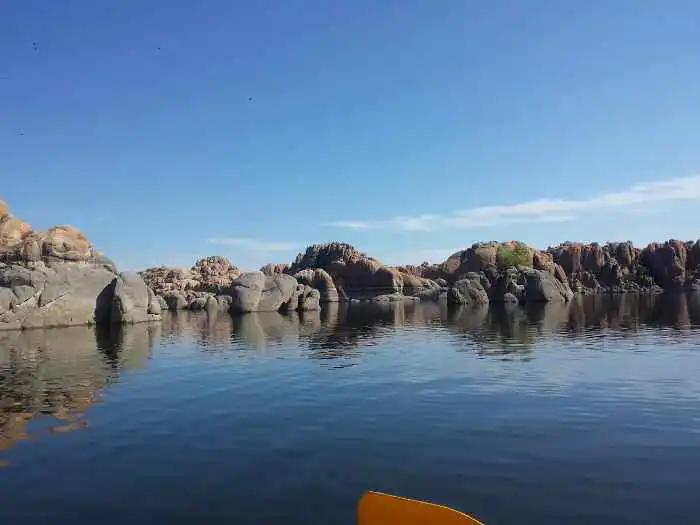
September
- Average High: 88°F (31°C)
- Average Low: 57°F (14°C)
- Precipitation: 1.8 inches
Overview: September begins to cool down slightly, especially towards the end of the month. The monsoon season tapers off, leaving behind lush, green landscapes. It’s a wonderful time for outdoor activities as the weather becomes more moderate.
Weather: Daytime temperatures range from 88°F to 64°F (31°C to 18°C), with cooler nights.
Highlights: Fall foliage, cooler temperatures, fewer crowds.
Why Visit: Fall is a fantastic time to visit Sedona, especially if you’re interested in seeing the area’s beautiful fall foliage. Oak Creek Canyon, in particular, is renowned for its vibrant autumn colors, which create a stunning contrast with the red rocks. The weather is cooler, making it comfortable for hiking and outdoor exploration.
October
- Average High: 77°F (25°C)
- Average Low: 46°F (8°C)
- Precipitation: 1.3 inches
Overview: October is one of the best months to visit Verde Valley. The temperatures are comfortable, and the fall colors start to appear in the foliage. It’s a perfect time for hiking, exploring, and enjoying the natural beauty of the area. We love visiting in October. It is our favorite month to camp in Sedona. Take a scenic train ride out of Clarkdale.
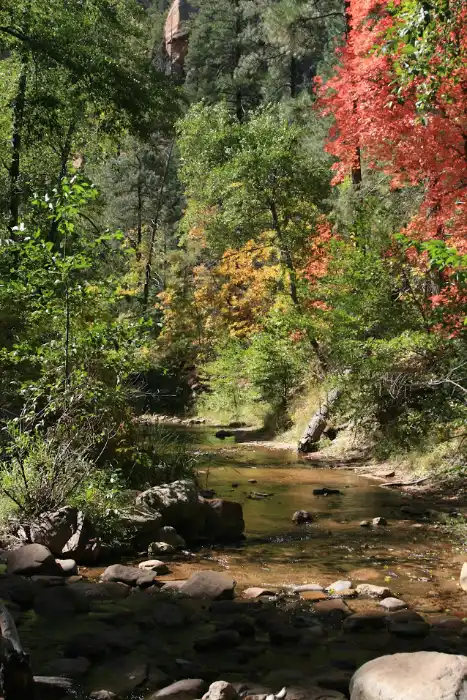
Weather: Daytime temperatures range from 88°F to 64°F (31°C to 18°C), with cooler nights.
Highlights: Fall foliage, cooler temperatures, fewer crowds.
Why Visit: Fall is a fantastic time to visit Sedona, especially if you’re interested in seeing the area’s beautiful fall foliage. Oak Creek Canyon, in particular, is renowned for its vibrant autumn colors, which create a stunning contrast with the red rocks.
The weather is cooler, making it comfortable for hiking and outdoor exploration.
November
- Average High: 64°F (18°C)
- Average Low: 36°F (2°C)
- Precipitation: 1.4 inches
Overview: November brings cooler temperatures and the occasional frost. The fall colors are still visible, and the crisp air makes it an ideal time for outdoor activities. It’s also the start of the holiday season, with festive decorations appearing around town.
Weather: Daytime temperatures range from 88°F to 64°F (31°C to 18°C), with cooler nights.
Highlights: Fall foliage, cooler temperatures, more tourists this time of year than in summer.
Why Visit: Fall is a fantastic time to visit Verde Valley, especially if you’re interested in seeing the area’s beautiful fall foliage. Oak Creek Canyon, in particular, is renowned for its vibrant autumn colors, which create a stunning contrast with the red rocks. The weather is cooler, making it comfortable for hiking and outdoor exploration. Additionally, the summer crowds have thinned out, allowing for a more peaceful experience.
December
- Average High: 56°F (13°C)
- Average Low: 30°F (-1°C)
- Precipitation: 1.7 inches
Overview: December is the coldest month, with frosty mornings and cool days. Snow is possible, but usually light. The holiday season adds a festive atmosphere to Sedona, with many events and decorations to enjoy.
Weather: Cooler temperatures, ranging from 56°F to 61°F (13°C to 16°C) during the day, with cold nights.
Highlights: Lower prices, fewer tourists, possible light snow, holiday events.
Why Visit: If you’re looking for a quieter, more budget-friendly time to visit the Verde Valley, winter is a great choice. The tourist crowds are at their lowest, and you can often find deals on accommodations. While the days are cooler, they’re still pleasant enough for outdoor activities like hiking.
Winter also brings the chance of light snow, which can create a magical atmosphere as it dusts the red rock formations. Plus, the holiday season adds a festive touch to the town with lights and events. Prescott’s , while not in the Verde Valley is close and it’s hometown Christmas parade is the best in Arizona. the holiday season adds a festive touch to the town with lights and events.
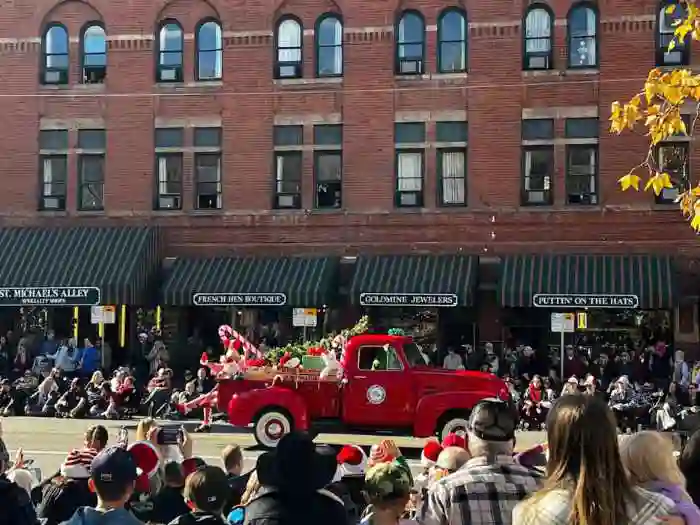
Arizona Weather By Month
Vising another area in Arizona? We’ve added weather information for each region

